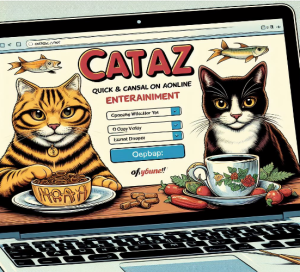Professionals are employed because of the knowledge they control: “know – what” and “know – how”. Artificial Intelligence can save or collapse the professional firm.
Today’s providers of professional services have moved from their original raison d’etre of providing knowledge and skills to make life better, to being a machinery that is driven by a desire for income.
At the earliest times a professional was a self employed person who gained income to work, not worked to gain income. This often meant that the individual was already wealthy, or lived on meagre means. The latter not being helpful to either developing his skills or attracting large numbers into the profession. Eventually, the combination of client need and the need to make a living created the machinery of today where a bespoke service is provided one-to-one and at a fee which dissuades many potential clients. Today’s business model has moved a long way from its origins.
Trusted adviser
We hear again and again that clients are yearning for a trusted adviser, one whose focus is to make their life better, one who solves their problems alongside them, not behind closed doors, one whose fees are determined up front so the client can determine if the effort is worth it, not at the end of the process when results and value seem poles apart. In effect they are yearning for bygone days.
Watson, Tay and Xiaolce
Artificial Intelligence has become mainstream. In the last 2 months I have attended three seminars where Watson has been discussed. Watson is AI created by IBM. You may recall its win against 2 world title holders of the show Jeopardy in 2011.
In Western Australia, Watson is being used by Woodside Petroleum Limited to improve productivity, safety and a raft of other things. The volume of data it consumes, and the user’s ability to interrogate it in normal English is achieving Woodside’s aims. Yes, the upfront cost is not to be sneezed at, but the gains are huge, not the least being the message it sends to its staff and competition.
AI is being used in a whole range of industries. Baylor and IBM have developed KnIT which scans medical literature and generates research hypothesis. After toiling through 70,000 articles, KnIT found 6 possibilities for a protein p53 “switch” (a switch turns the protein on). Only 33 possible switches had been found in the 30 years up to then.
Microsoft sent Tay out into the world on 23rd March 2016 (and withdrew her in 24 hours). Tay a chatbot was created for girls between 18 – 24 years of age. She followed Xiaolce, a Chinese chatbot who was very successful in China. Tay was created to search conversations, comment and reply. As an AI, Tay needs some work. But that she was created gives another example of how mainstream AI now is.
And its not AI alone that’s making a difference. AI plus robots are being used in the University of California, in San Francisco. Here its pharmacy is being staffed by a robot which has completed more than 2 million prescriptions, all without error. An average human pharmacist would have made a 1% error, translating into 20,000 scripts.
The exciting thing about Watson and similar AI is that it can consume the written word, find patterns and reply to spoken English. For the professions this provides a great opportunity, and a threat.
What knowledge do you have?
Professionals are employed because of the two types of knowledge they control: “know – what” and “know – how”. Hours upon hours are spent keeping up to date with the latest in the field and building the experience to apply it well. In times pre-internet this knowledge was very valuable.
The internet is cutting a swathe through the value of the knowledge. You will have accessed this article through the World Wide Web, and you will be assessing its value based on your knowledge, expertise and relationship with me. You are gaining “know – what” to add to your burgeoning brain, that is, if you think it is of value. You are paying nothing for this knowledge. I will get paid when you need to access my “know-how”.
The internet has made almost all knowledge available, whether from government sites which help on mining, law, taxation, health and so on; on line universities where knowledge is available for free (Khan Academy) or highly discounted (some courses at Harvard are offered at a seeming pittance); or specific websites and videos which show exactly how things should be done.
Yep, YouTube is a reputable alternative
I was amused to hear a highly skilled tiler say that he looked to YouTube to help him with a complex problem. He was laying specialised tiles, each costing several hundred dollars, and was not sure how to do it. The answer was not on YouTube so he had to figure it out himself!
What business model suits?
Consumers spend hours each day using the computer so it is natural that some of this time will be spent researching an area of concern to themselves or their firm. So when they visit a professional it is likely they will be informed and so seeking confirmation or a way to turn their knowledge into action. We’ve already seen this in the Doctor-Patient relationship where patients self diagnose and come to the doctor for confirmation and treatment. Now that quality medical advice is becoming available on the internet (granted in some areas it still has a way to go) the Doctor-Patient conversation is changing. As the patient is more informed the Doctor can discuss matters at greater depth and then patient and not the illness has pride of place: This is an incredibly valuable service especially in these days of growing isolation
There are many approaches to changing the professional practice model. Ernst and Young (EY) and PwC, two global accounting firms now have nurses on staff. These firms have combined their strength in data management with the desire to get into a growing sector and the result is nurses on staff. The firms have extended their business model – They have searched for new services to apply to a new market, one that accords with the strengths of the firms.
CSA Global a West Australian mining services company is applying its knowledge gained in mining to new sectors of viticulture, agribusiness and canal construction. Its providing 3D soil mapping to establish the best place to plant vines, mining optimisation solutions for blending hay, and conducting an aerial survey to provide archaeological, environmental, engineering data as part of the construction of a canal. Using software and technology with its know-what, makes its know-how valuable.
Likewise my business has evolved. It’s considerably different to only a few short years ago. I now offer a blended service model (on-line tools and forums to supplement my face-to-face service). My clients are ambitious and want control over their decisions and the knowledge they acquire. They know what to do. They use me for my “know-how”.
The knowledge based model on its own is not sufficient now.
Is it a drill, a hole or nothing at all?
There is a story about a group of new executives sitting at the board table and being educated on their products. The first product was shown. The group was asked what it was. No one answered for a long time, and then one sheepish executive said. “It’s a drill”. To which the questioner replied: “Look more closely…It’s a hole. That’s what the buyer purchases with this drill”.
There will likely be a time when a drill will be unknown to all except for a few enthusiasts or machinists. You can already buy pre-drilled products, I’ve spent some hours assembling Ikea products which have no need for a drill (though an after glass of wine was needed), and I recently bought pre-drilled sheeting for my shed. The market for drills may last for many more years, maybe forever, but it is not immune to other innovations. Eventually there will be products which will mould into one another, and no drilling will be required. What then?
The answer is in the user’s problem.
Continuous improvement will not create a market
Continuous improvement will not keep a drill valuable if no holes are required. And likewise, no matter how well the hidden waste is removed from the firm or it is aligned to its strategies, success will not come from continuous improvement, not unless there are sufficient buyers to make it worthwhile.
Professional practices will not have value if what they sell is freely available. They need more than improvements. They need to adapt.
The savvy Doctor now treats the patient AND the illness, a situation made possible with the burgeoning technology and sharing of information. It is no longer acceptable for a Doctor to be abrupt or lacking in EQ.
What does the future look like?
The professional of the future has a business model which uses its firm’s strengths and adds value to the free or cheap know-what its clients’ have. It finds solutions to clients’ problems that meet their needs – of both the firm and the client.
Combining intelligence (artificial and human), technology and an understanding of itself and its desired client, the professional firm’s model will be different, very different to today.
It will have failed, many times. There is too much change not to have failure as a desired goal. Microsoft advised that they had a successful chatbot launch in China (Xiaolce), but it did not translate as successfully with Tay. They’ve gone back to the drawing board to fix her. Failure is necessary. It shows that something new was tried.
And it will return to its roots: A trusted adviser, one whose focus is to make their client’s life better, and one who solves their problems with them whilst using all the intelligence and technology available.
That is the professional service firm of the future: A firm that builds on its strengths and solves the problems of its clients. Not that much different to what it promises now really.
Support Ukraine against russian fascists! Defend Europe from horde! Glory to Ukraine! 🇺🇦

Head and Editor in Chief of EcmaScript2017 Journal. Senior JS Back-end Full stack developer and software architect.



Read Also
Why DevOps Managed Services Have Become More Popular and Important
M4uHD: Unveiling the Entertainment or Venturing into Uncertainty?
Smart Square HMH: Access, Features, Pros, Cons